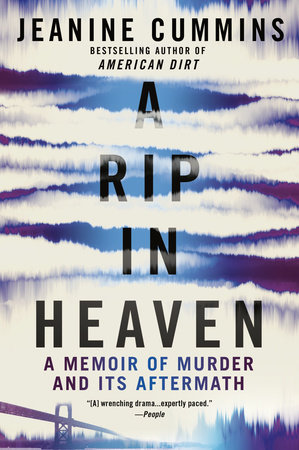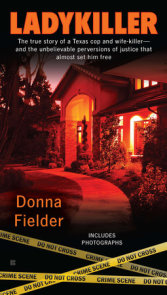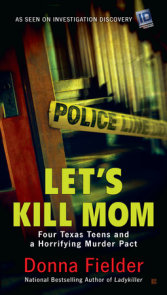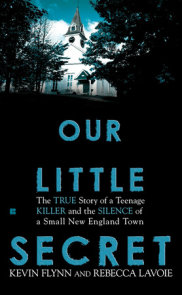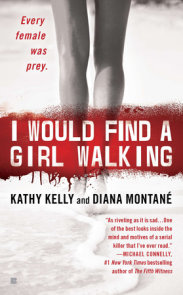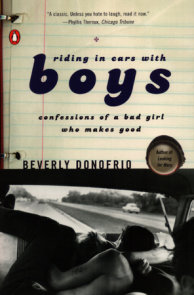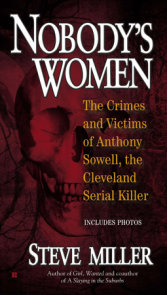READERS GUIDE
Questions and Topics for Discussion
INTRODUCTION
It was a headline story in the New York Times and USA Today. It was covered by Court TV and profiled on the Ricki Lake Show. Now, here is the intimate memoir of a shocking crime and its aftermath…one family’s immediate and unforgettable story of what victims can suffer long after they should be safe.
ABOUT JEANINE CUMMINSJeanine Cummins lives in New York City.
DISCUSSION QUESTIONSMany members of the victims’ families in this case found their views of capital punishment challenged. Do you believe your views might change if someone in your family was victimized?
What do you think of the author’s statement that perhaps the death penalty is wrong “Because it trivializes the people who should matter the most. Because it allows the murderers the opportunity to wear a badge they don’t deserve—the badge of victim.” (page 301). Is this a side-effect of capital punishment you’ve ever considered before? Does it change how you might view the issue?
Violent crimes, particularly homicides, have consequences that reach far beyond just victim and perpetrator. On pages 276-77, the author discusses the state definition for these secondary victims or “homicide survivors.” She calls the definition “insufficient; there were no varying degrees within that definition to depict: mother, sister, cousin, friend.” The family members of death row inmates also suffer the loss of a loved one. Are they victims in their own right? Consider the distress to the families on each side of the coin. Which do you think would be worse?
Discuss the effects of police conduct in this case. The detectives involved were committed to arresting Julie’s and Robin’s murderers, and eventually, their investigation was successful. Did the ends justify the means? Could Tom Cummins and his father have made things easier on themselves by being more skeptical of the police? What about Marlin Gray’s allegations of brutality? How were Tom’s experiences with the police similar and/or different from the four convicted murderers? Would the police conduct have been acceptable if Tom had been guilty?
Murder is not an uncommon occurrence in modern society. So what was it about this particular case that caused such a media frenzy? Why are some homicides considered newsworthy while others are virtually ignored by the press?
What role did the media play in helping to solve this case initially? Did the media sensationalism have a direct impact on police conduct? What effect did the media have on Tom’s life?
The perpetrators and victims of this crime were all young people, under the age of 23. Do you think peer pressure and a desire for acceptance motivate any of the men who committed this crime? What is the difference between peer pressure and a mob mentality? Can you identify a situation in your own life where peer pressure played an important role? Or could any of the perpetrators have turned back and changed the course of events at any time?
Antonio Richardson’s clemency application cited the many hardships of his tragic childhood as explanation for the violence he perpetrated. (pages 285-86) Yet there are many cases in which young people under similar circumstances have led exemplary lives. Discuss the arguments of nature versus nurture in this case. Was Richardson predisposed to violence? Or could he have altered the course of his life, even without the help of a decent education or wholesome family environment? Would his upbringing have a significant impact on his propensity to commit or prevent rape and murder?
Most people can point to some trauma in life, whether small or large, private or public, as a defining moment. How did this particular tragedy shape and define the lives of the families involved? How might the members of the Cummins and Kerry families be different today if this tragedy had never happened? The negative effects of that night are obvious, but can you identify any positive results as well?
The author describes her cousins as “more than active in the community.” She calls them hyperactive. She says that “Whenever the two sisters had time off from class, they trekked to the Salvation Army’s Family Haven in downtown St. Louis where they tutored first graders, helping them with their homework. They also did volunteer work with Amnesty International and Greenpeace” (page 24). How might Julie’s and Robin’s views and activism have changed in their 20s and 30s if they had lived? How do you view their activism in light of their deaths as the victims of violent crime?
When the police asked Tom Cummins to describe his relationship to his cousin Julie, he mentioned “a real strong bond” that they shared (page 100). This “bond” was one factor in the original police suspicion towards Tom. The police felt that the intensity of Tom’s and Julie’s friendship (as Tom described it) was unnatural. Was any of that suspicion justified? How do coming-of-age relationships differ from childhood and adult relationships? Are close friendships formed by teenagers more intense than those formed at other stages of life? Why or why not?
This crime happened in the Midwest in 1991. How do time and place color this tragedy? Would the incident have been treated differently by police and media if it had happened in Los Angeles or New York? If it had happened after 9/11? Why or why not?
Consider the traditional roles of gender in the book and how they were altered by this tragedy. How does the misogyny that is inherent in the crime of rape affect men and women differently? Consider the different post-traumatic responses of Julie’s and Robin’s loved ones. How did the men react differently than the women? How were their reactions similar? How did the parents’ roles blend and change in response to this tragedy?
Poetry played a big part in the life of Julie Kerry, and it has played an equally important role in comforting and healing the loved ones she left behind. Many of the poems use symbols of death, water, and bridges. Do you think this is simply a favorite device of Julie’s because of her affinity with the Mississippi? Or do you think there’s a deeper connection there? On page 237, the author calls the poetry “eerily prophetic.” Do you agree? Why or why not?
Cummins chose to write this book using a third-person omniscient narrator. Thus, the author “Jeanine” is the same as the character “Tink.” Why do you think she made this choice? Was it an effective device, or did it just confuse the issues? Do you think her close relationship to the victims in this story strengthens or weakens her credibility?
In the afterword, the author writes “I don’t want to end this book on an angry note. I’m not all that angry any more. Writing this has allowed me to move past a lot of that.” After reading the book, do you think this statement rings true? Discuss the role of art (whether it be writing, painting, music, etc) as a healing force. What role has artistic expression played in your own life? Do you believe the arts can be a form of therapy and catharsis?
In the forward, the author writes that “This book is the story of a violent crime. And it’s the story of my family. By its very nature it is both a true crime and a memoir.” Did she succeed in blending these two genres? If you had to classify the book, where would you shelve it—in the True Crime section or in Memoir? Was the book more closely related to one genre than the other, and why is that important?









